You know how we Filipinos love to adobo everything from chicken to kangkong? Well, these Baby Back Ribs with Adobo Glaze are my latest love affair with our national sauce.
I've taken our beloved adobo and given it a fun twist by marrying it with tender, juicy baby back ribs and adding a killer honey-breadcrumb crust that gets all caramelized and crispy in the oven. If you think regular adobo is addictive, just wait until you try this version.
It's got all those garlicky, tangy, savory flavors we can't get enough of, but with an extra layer of sweet-crispy goodness that'll have you licking your fingers and reaching for more.
Jump to:
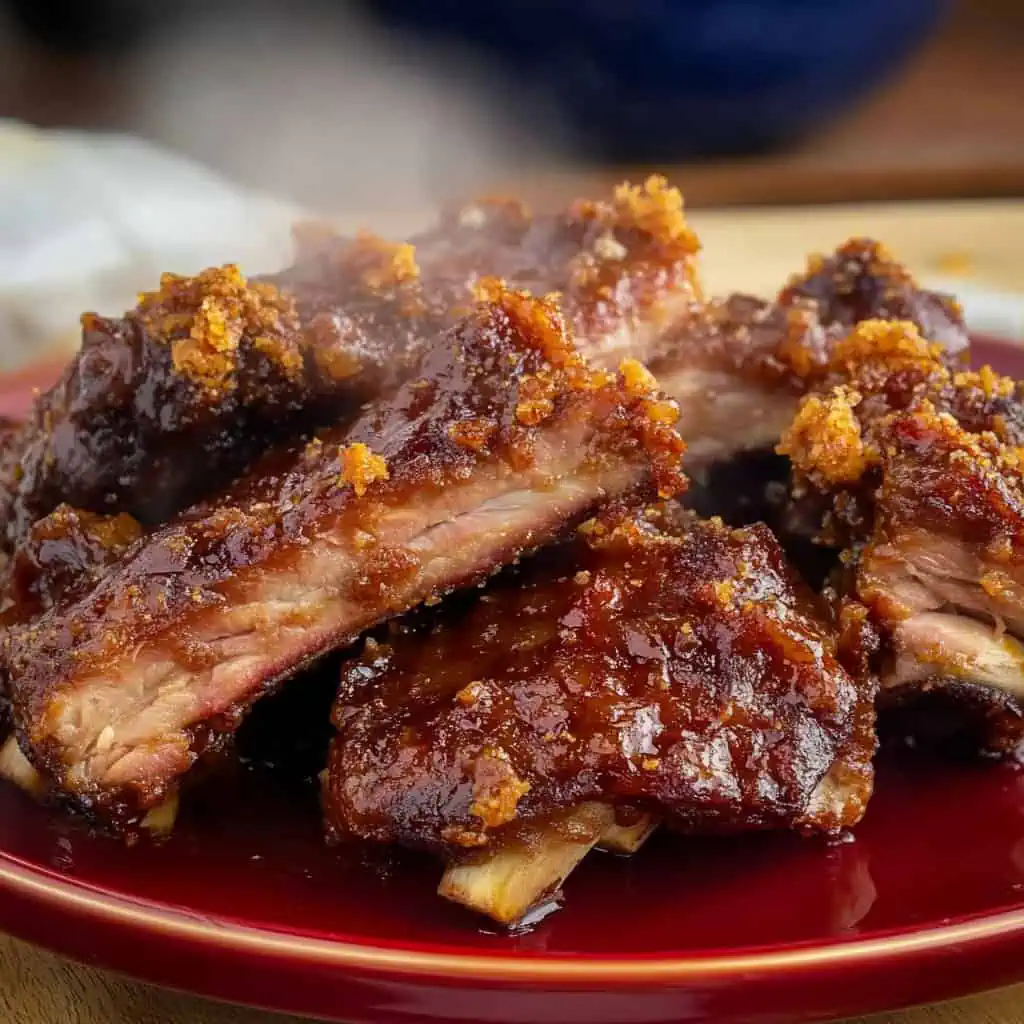
Why You'll Love This Recipe
- Fall-off-the-bone tender meat infused with classic Filipino adobo flavors
- Perfect balance of sweet, savory, and tangy tastes
- Unique crispy breadcrumb topping adds wonderful texture
- Make-ahead friendly for parties and gatherings
- No grill needed - made entirely in your kitchen
- Impressive presentation for special occasions
Ingredients
These ingredients create the perfect balance of Filipino adobo flavors. Soy sauce provides the savory umami base, while vinegar adds the signature tangy brightness that defines adobo. Garlic, peppercorns, and bay leaves form the aromatic foundation that's essential to authentic Filipino cooking.
Brown sugar balances the acidity and helps with caramelization. The unexpected addition of panko breadcrumbs and honey creates a crispy, sweet crust that elevates these ribs beyond traditional adobo, giving them a modern twist that combines the best of slow-braised Filipino cooking with American-style barbecue textures.
Every component works together to transform tough ribs into tender, flavorful meat with a crave-worthy glaze.
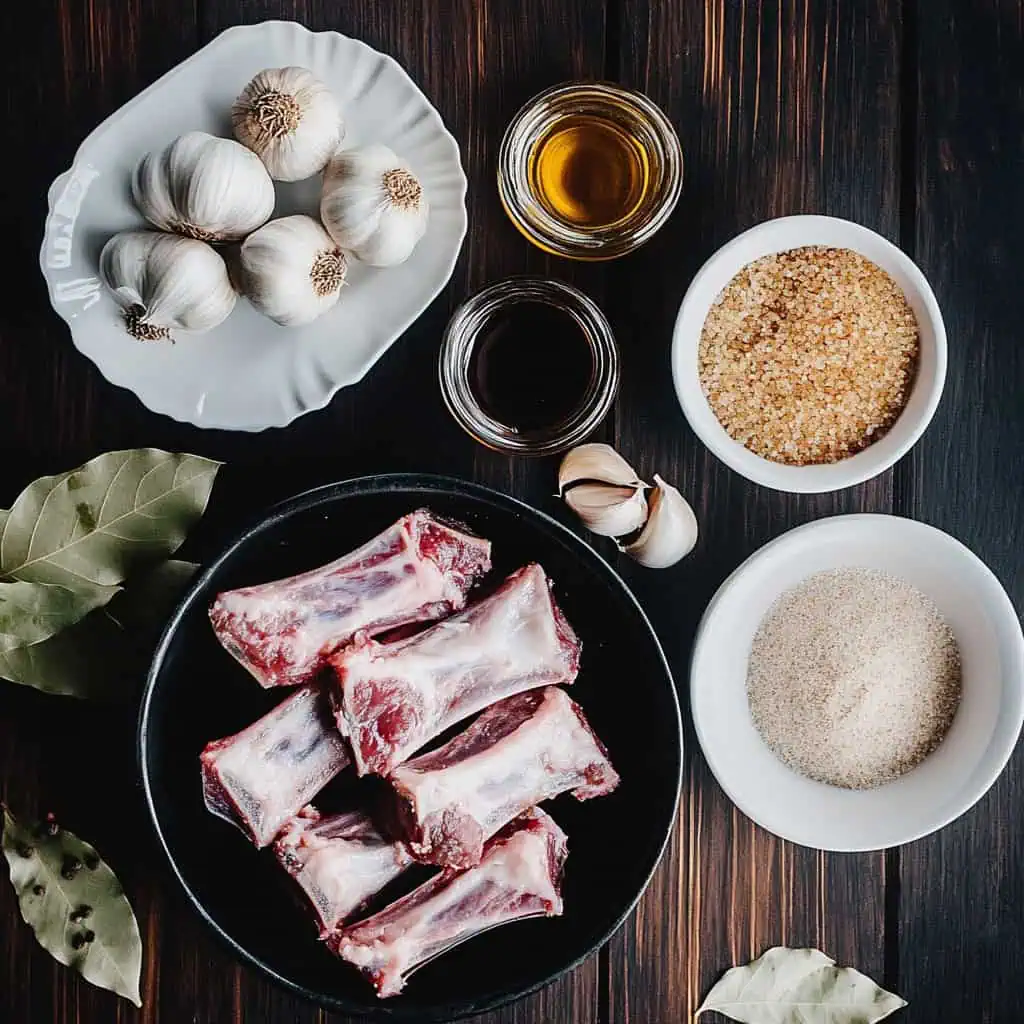
- 3 pounds pork back ribs, cut between bones
- ½ cup soy sauce
- 1 cup vinegar
- ¼ cup brown sugar
- 1 head garlic, peeled and minced
- ½ teaspoon peppercorns, crushed
- 2 bay leaves
- ½ cup panko breadcrumbs
- ½ cup honey
- 1 tablespoon butter
Equipment
- Large Heavy-Bottom Pot - For braising the ribs in adobo sauce, ensuring even heat distribution and preventing burning
- Baking Sheet - For the final caramelization stage in the oven
- Aluminum Foil - For lining the baking sheet to make cleanup easier
- Meat Thermometer - To ensure proper cooking temperature of 190°F (88°C)
- Tongs - For safely handling the hot ribs without piercing the meat
- Sharp Knife - For cutting between the bones and serving
- Measuring Cups and Spoons - For accurate measurements of ingredients
- Garlic Press - Optional tool for quickly mincing garlic
- Skimmer or Spoon - For removing foam during the cooking process

How To Make
- Take your ribs out of the refrigerator 30 minutes before cooking to reach room temperature. While waiting, peel and mince your whole head of garlic, and gently crush the peppercorns using the back of a spoon.
- Place the pork ribs inside your largest pot. Pour in the soy sauce, vinegar, and add the brown sugar, minced garlic, crushed peppercorns, and bay leaves. Turn your stove to medium heat and bring everything to a gentle boil.
- Once boiling, you'll see some gray foam floating on top. Take a spoon and carefully remove this foam – this will give you a cleaner-tasting sauce. After skimming, turn the heat to low, put the lid on, and let it simmer quietly for about 1 to 1½ hours. You'll know the meat is ready when you can easily pierce it with a fork.
- Remove the tender ribs from the pot and set them aside. Keep the sauce in the pot – we're going to make it even better. Add the panko breadcrumbs, honey, and butter to the remaining sauce in the pot. Let this mixture simmer gently for 5 minutes, stirring occasionally, until it thickens into a nice glaze.
- While your glaze is simmering, preheat your oven to 375°F (190°C). Line a baking sheet with foil for easier cleanup. Place your ribs on the lined baking sheet, leaving a little space between each piece.
- Take your thickened glaze and generously spread it over each piece of rib. Make sure to coat them well – this will create that delicious crust we're looking for.
- Put the ribs in your preheated oven and bake for 10 to 15 minutes. Watch them carefully during the last few minutes. You want the glaze to turn golden brown and slightly caramelized, but not burnt.
- Let the ribs rest for 5 minutes before serving. This resting time allows the meat to become even more tender and lets the glaze set up nicely.

Tips from Lola's Kitchen
- Choose ribs with good marbling - Look for baby back ribs with a nice balance of meat and fat for the most tender, flavorful results.
- Properly prep your ribs - Remove the membrane from the back of the ribs by sliding a knife under it and pulling it off with a paper towel for better flavor penetration.
- Don't rush the braising - Low and slow is the secret to tender meat. If the ribs aren't fork-tender after the suggested time, give them another 20-30 minutes.
- Let the vinegar boil uncovered for the first 5 minutes to mellow its acidity.
- For deeper flavor, marinate the ribs overnight in the adobo mixture before cooking.
- Control the salt level by using low-sodium soy sauce if you're sensitive to salt.
- For extra tender ribs, cover the pot with foil before putting the lid on to create a tighter seal during braising.
- Score the membrane on the back of the ribs for better flavor absorption if you don't want to remove it completely.
- Always let the meat rest for 5-10 minutes before serving to allow juices to redistribute.
Substitutions
- Soy Sauce: Use liquid aminos or coconut aminos for a gluten-free option with less sodium.
- White Vinegar: Apple cider vinegar adds a fruity note, while cane vinegar provides a more authentic Filipino flavor.
- Brown Sugar: Muscovado sugar gives deeper molasses notes, or use honey for a different sweetness profile.
- Panko: Regular breadcrumbs work well, or try crushed crackers or cornflakes for an interesting texture variation.
- Honey: Maple syrup or agave nectar can replace honey with their own unique flavors.
- Pork Ribs: Beef short ribs can be used for a different flavor profile, though cooking time will need to be adjusted.
- Bay Leaves: If unavailable, use a pinch of dried oregano and thyme as a substitute.
Troubleshooting
Tough Meat:
- Braising time may be too short - continue cooking until fork tender
- Temperature might be too high - ensure you're simmering, not boiling
- Cover the pot properly to keep moisture in
- Check if ribs were fresh or previously frozen, as frozen ribs sometimes need longer cooking times
Too Salty:
- Balance with additional honey or brown sugar
- Add a quartered potato to the sauce while cooking to absorb excess salt
- Serve with plain steamed rice to balance the flavors
- Add a splash of water or broth to dilute the sauce
Glaze Too Thin:
- Simmer longer to reduce and concentrate flavors
- Add more breadcrumbs gradually, stirring constantly
- Let stand for 5-10 minutes to naturally thicken
- Add 1 teaspoon of cornstarch mixed with water for quick thickening
Burnt Glaze:
- Watch the oven carefully during the final minutes
- Position the rack in the middle of the oven, not too close to the heating element
- Reduce oven temperature to 350°F if your oven runs hot
- Cover sections with foil if they're browning too quickly
Storage & Reheating
Storage:
- Refrigerator: Store cooled ribs in an airtight container for up to 3 days.
- Freezer: Wrap individual portions in foil, then place in freezer bags with air removed. Will keep for up to 2 months.
- Sauce: Store any leftover sauce separately in a sealed container for up to 5 days in the refrigerator.
Reheating:
- Oven (Best Method): Wrap ribs in foil with a tablespoon of water or leftover sauce and heat at 350°F (175°C) for 15-20 minutes until internal temperature reaches 165°F (74°C).
- Microwave: Place ribs on a microwave-safe plate with a damp paper towel over them. Heat on medium power for 2-3 minutes, checking halfway through.
- Stovetop: For a quick reheat, slice between ribs, add a small amount of water to a pan, and gently warm over medium-low heat with a lid.
- Air Fryer: Heat at 350°F for 3-4 minutes for a crispy exterior.

FAQ
Can I make this in a slow cooker?
Yes! Place all braising ingredients in a slow cooker and cook on low for 6-8 hours or high for 4-6 hours. Remove the ribs, transfer the sauce to a saucepan, add breadcrumbs, honey, and butter, then finish in the oven as directed.
How do I know when the ribs are done?
The meat should easily pull away from the bone and reach an internal temperature of 190°F (88°C). If you twist a bone, it should move freely within the meat.
Can I use spare ribs instead of baby back ribs?
Yes, but cooking time may need to be increased by 30-45 minutes as spare ribs are typically larger and tougher than baby backs.
Why use breadcrumbs in the glaze?
The breadcrumbs create a unique crispy crust and help thicken the glaze. They also absorb the adobo flavors, creating an incredible textural element.
Can I make this ahead for a party?
Absolutely! Braise the ribs a day ahead and refrigerate them in the cooking liquid. Before serving, make the glaze, coat the ribs, and finish in the oven. This actually improves the flavor.
What sides pair well with these ribs?
Steamed white rice, pickled green papaya (achara), tomato and onion ensalada, or a simple cucumber salad all complement these ribs beautifully.
Is this recipe spicy?
As written, the recipe is not spicy. To add heat, include a few sliced Thai chilies or siling labuyo during the braising process.
How can I make this recipe lower in sodium?
Use low-sodium soy sauce or coconut aminos, and reduce the amount of soy sauce while increasing the vinegar slightly to maintain the tangy flavor profile.
Can I grill these instead of using the oven?
Yes! After braising, coat the ribs in glaze and finish on a medium-heat grill for 5-7 minutes, watching carefully to prevent burning.
Related
Looking for other recipes like this? Try these:
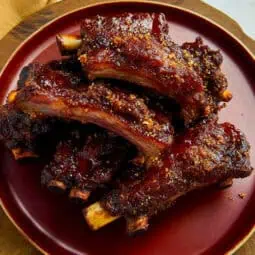
Filipino Baby Back Ribs with Adobo Glaze Recipe
Equipment
- Large Heavy-Bottom Pot (Kaldero) For braising the ribs in adobo sauce
- Baking sheet (cookie sheet) For the final caramelization
- Aluminum foil For lining the baking sheet
- Meat thermometer To ensure proper cooking temperature
- Tongs For handling the hot ribs
- Sharp knife For cutting between the bones
- Measuring cups and spoons For accurate measurements
- Garlic press (optional) For mincing garlic
Ingredients
For the Adobo Braising:
- 3 pounds pork back ribs tadyang ng baboy, cut between bones
- ½ cup soy sauce toyo
- 1 cup vinegar suka
- ¼ cup brown sugar asukal na pula
- 1 head garlic bawang, peeled and minced
- ½ teaspoon peppercorns paminta, crushed
- 2 bay leaves dahon ng laurel
For the Glaze:
- ½ cup panko breadcrumbs
- ½ cup honey pulot
- 1 tablespoon butter mantikilya
Instructions
- Take your ribs out of the refrigerator 30 minutes before cooking to reach room temperature. While waiting, peel and mince your whole head of garlic, and gently crush the peppercorns using the back of a spoon.
- Find your largest pot and place the pork ribs inside. Pour in the soy sauce, vinegar, and add the brown sugar, minced garlic, crushed peppercorns, and bay leaves. Turn your stove to medium heat and bring everything to a gentle boil.
- Once boiling, you'll see some gray foam (we call this langis) floating on top. Take a spoon and carefully remove this foam – this will give you a cleaner-tasting sauce. After skimming, turn the heat to low, put the lid on, and let it simmer quietly for about 1 to 1½ hours. You'll know the meat is ready when you can easily pierce it with a fork.
- Remove the tender ribs from the pot and set them aside. Keep the sauce in the pot – we're going to make it even better. Add the panko breadcrumbs, honey, and butter to the remaining sauce in the pot. Let this mixture simmer gently for 5 minutes, stirring occasionally, until it thickens into a nice glaze.
- While your glaze is simmering, turn your oven on to 375°F (190°C). Line a baking sheet with foil for easier cleanup. Place your ribs on the lined baking sheet, leaving a little space between each piece.
- Take your thickened glaze and generously spread it over each piece of rib. Make sure to coat them well – this will create that delicious crust we're looking for.
- Put the ribs in your preheated oven and bake for 10 to 15 minutes. Watch them carefully during the last few minutes. You want the glaze to turn golden brown and slightly caramelized, but not burnt.
- Let the ribs rest for 5 minutes before serving. This resting time allows the meat to become even more tender and lets the glaze set up nicely. Serve hot with steamed rice or your favorite sides.
- Remember: if your sauce ever gets too thick, you can thin it out with a splash of the adobo sauce from the pot. If it's too thin, just simmer it a bit longer until it reaches your desired thickness.
Tips from Lola's Kitchen
- Choose ribs with good meat-to-fat ratio for the best flavor
- Don't skip skimming the scum for a cleaner-tasting sauce
- Let vinegar boil uncovered briefly to mellow its acidity (asim)
- For extra tenderness, marinate ribs overnight in adobo mixture
- Score the membrane on the back of the ribs for better flavor absorption
- Rest the meat 5-10 minutes before serving
Nutrition
The Story Behind Filipino Baby Back Ribs with Adobo Glaze
Growing up in a Filipino household, adobo wasn't just a dish - it was our comfort food language. Every family had their own version, and every version told a story. This Baby Back Ribs with Adobo Glaze recipe was born from those countless Sunday afternoons watching my grandmother transform humble ingredients into magic with just vinegar, soy sauce, and patience.
While traditional adobo typically features chicken or pork belly, this recipe takes our beloved cooking method in an exciting new direction. Baby back ribs, typically associated with American barbecue, become the perfect canvas for our Filipino flavors. The marriage wasn't just delicious - it made perfect sense. After all, both Filipino adobo and American barbecue share that beautiful philosophy of turning tough cuts of meat into tender, flavorful masterpieces through slow cooking.
The addition of the honey-breadcrumb crust was a happy accident that happened during one rainy weekend when I was craving both the comfort of adobo and the sweetness of Korean barbecue ribs. As the breadcrumbs toasted in the remaining adobo sauce and honey, they created this incredible textural element that caught everyone's attention at our family gatherings. Soon, friends and relatives were requesting "those adobo ribs with the crunchy top."
What makes this dish truly special is how it honors our traditional adobo cooking method while embracing modern twists. The classic aromatics - garlic, bay leaves, and peppercorns - build that familiar savory foundation, while the honey-breadcrumb crust adds an unexpected layer of texture and sweetness that takes it to new heights. It's become a favorite at potlucks, family reunions, and even holiday celebrations, proving that sometimes the best traditions are the ones that evolve while keeping their soul intact.
Whether you're a Filipino missing the taste of home or someone discovering the wonders of adobo for the first time, these baby back ribs offer a delicious gateway into our rich culinary heritage. They're a testament to how Filipino cuisine continues to evolve while maintaining its heart - and in true Filipino fashion, they're best enjoyed shared with loved ones over stories and laughter.
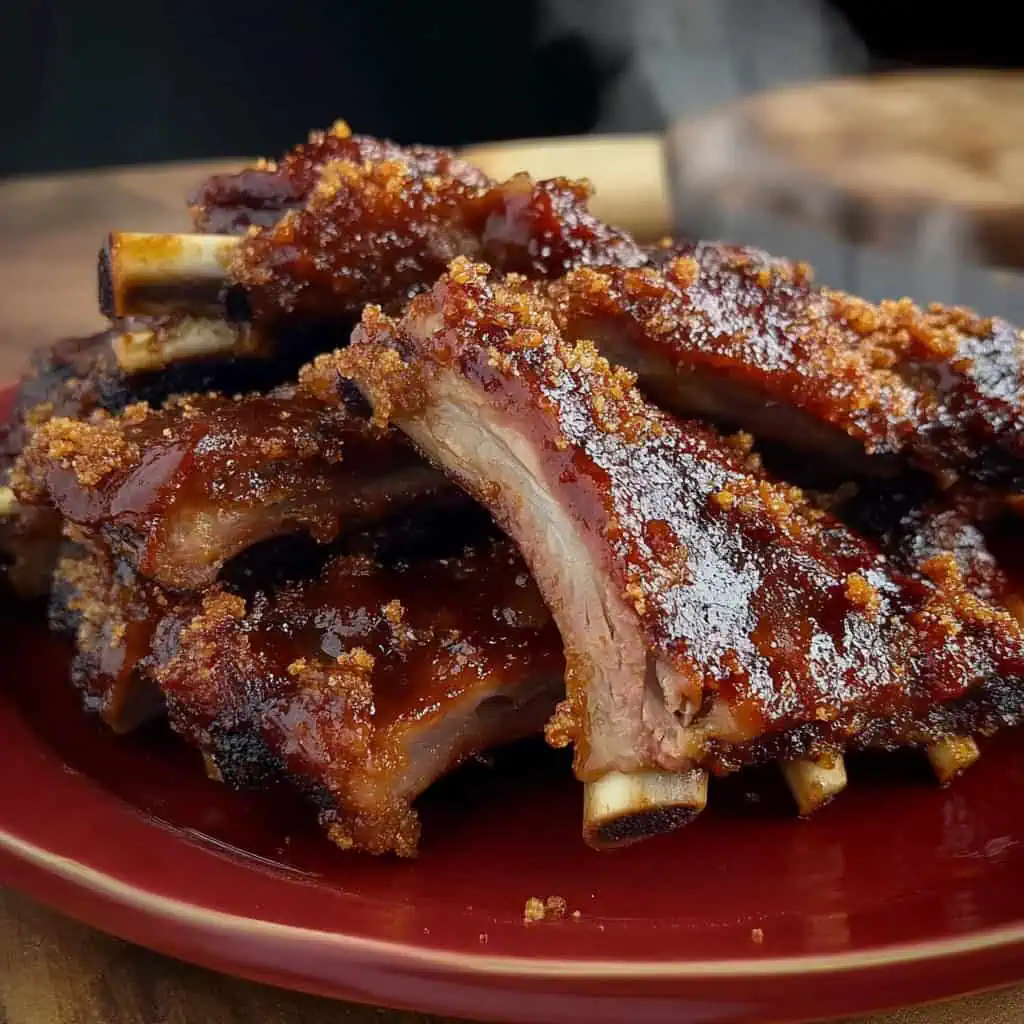

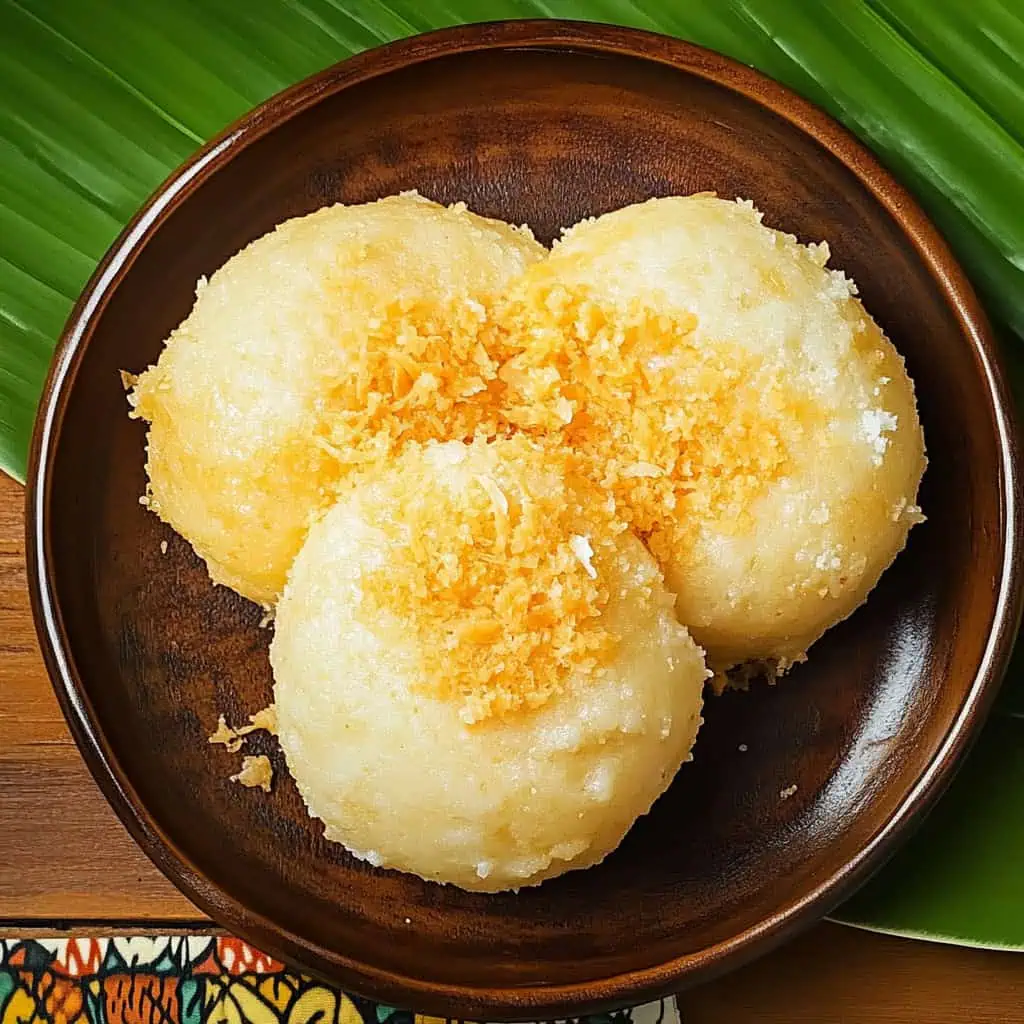
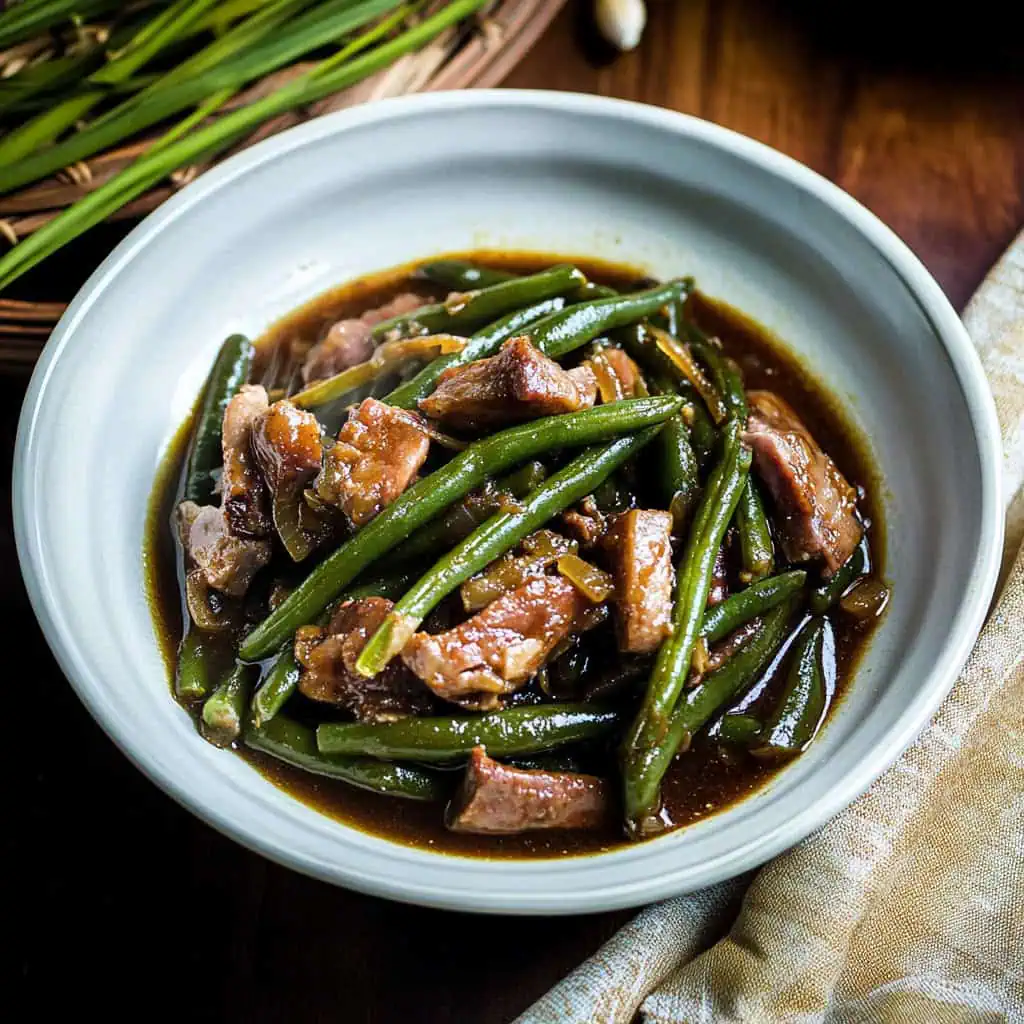

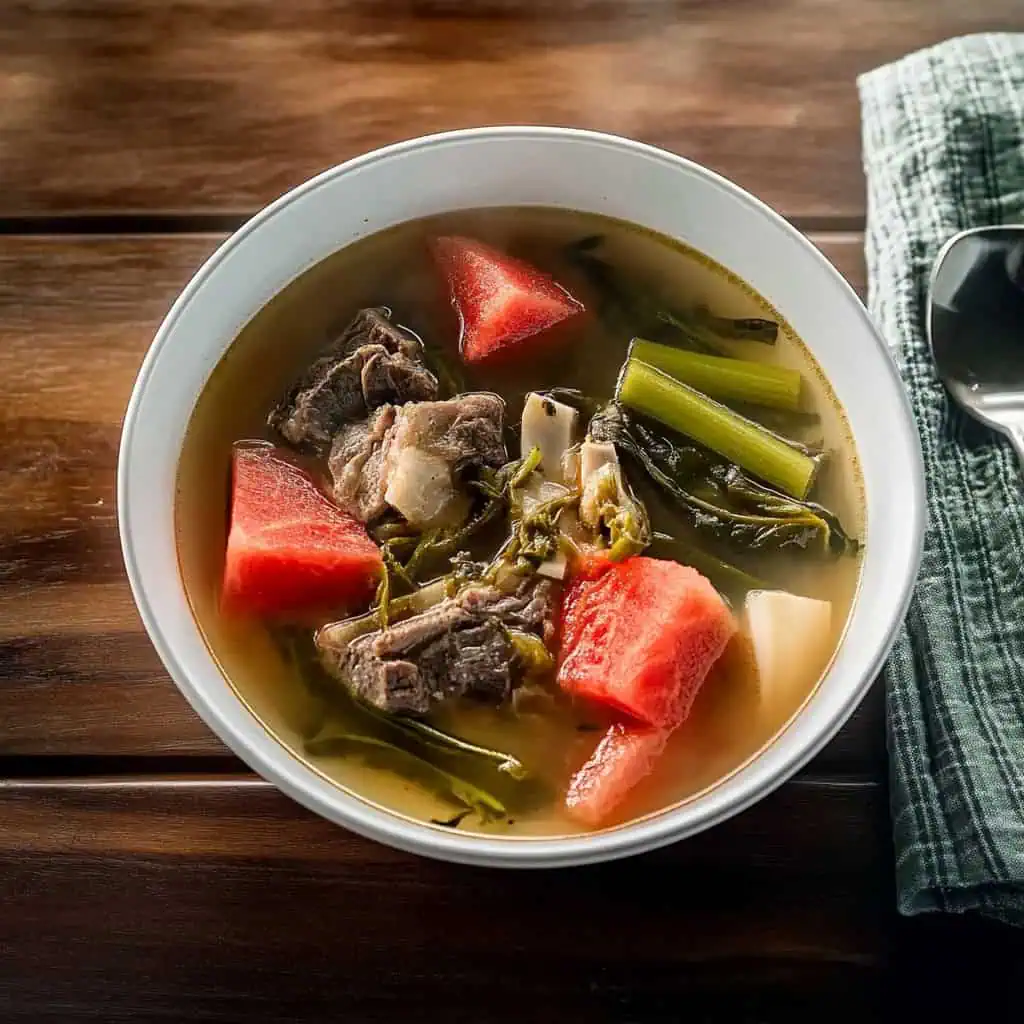
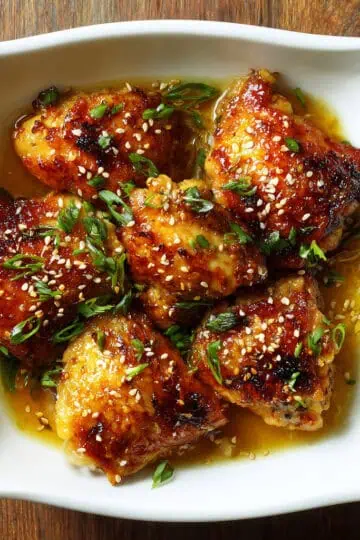
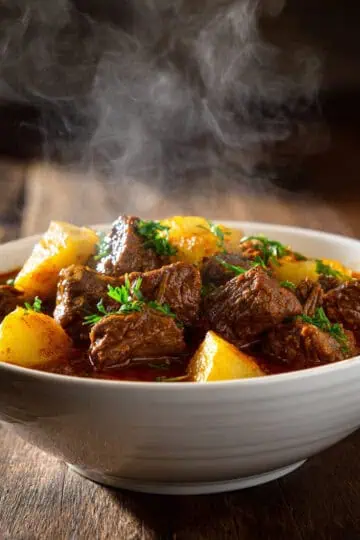
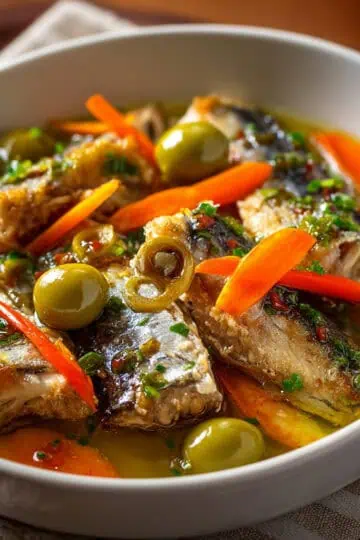

Comments
No Comments